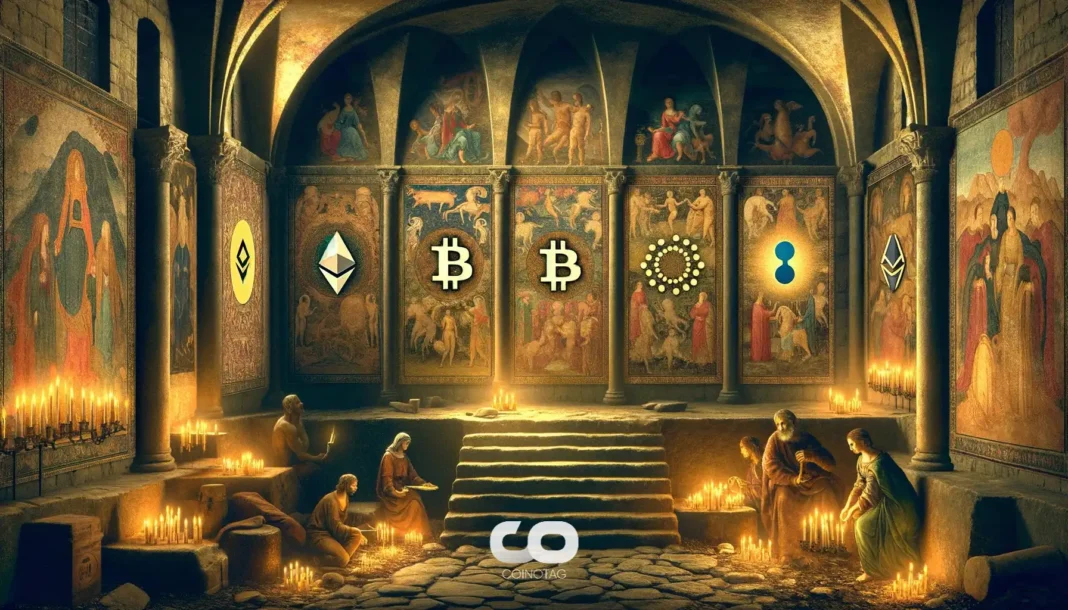-
Deutsche Bank is advancing its digital finance strategy by exploring the integration of stablecoins and tokenized deposits into its payment infrastructure.
-
This initiative aligns with ongoing regulatory developments in the U.S., particularly the bipartisan Genius Act, which aims to establish clear guidelines for stablecoins and foster innovation in digital assets.
-
According to Deutsche Bank’s head of digital assets, Sabih Behzad, the bank is considering multiple approaches, including issuing its own stablecoin or collaborating within an industry consortium to leverage blockchain technology effectively.
Deutsche Bank plans to integrate stablecoins amid U.S. Genius Act discussions, signaling a strategic move towards blockchain-based payments and digital asset innovation.
Deutsche Bank’s Strategic Shift Towards Stablecoin Integration
In a significant move reflecting the evolving financial landscape, Deutsche Bank is actively evaluating the adoption of stablecoins and tokenized deposits to enhance its payment systems. This strategy is driven by the growing recognition of stablecoins as efficient digital payment instruments that can reduce transaction costs and increase settlement speed. The bank’s exploration includes the potential issuance of its own stablecoin, which would position it competitively within the expanding $150 billion stablecoin market currently dominated by players like Tether and Circle. This approach is consistent with findings from the 2023 Bank for International Settlements (BIS) report, which emphasized that blockchain-enabled tokenized assets could reduce cross-border payment costs by up to 30%, underscoring the financial and operational benefits of such technology.
Regulatory Environment and the Impact of the Genius Act on Stablecoin Adoption
The timing of Deutsche Bank’s stablecoin initiative coincides with critical regulatory developments in both the United States and Europe. The U.S. Congress is actively debating the Genius Act, a bipartisan legislative proposal designed to regulate stablecoins while encouraging innovation in the digital asset space. This regulatory clarity is expected to create a supportive environment for banks and financial institutions to engage with stablecoins confidently. Meanwhile, the European Union’s Markets in Crypto-Assets (MiCA) regulation, set to take effect in 2025, introduces stringent compliance standards for stablecoins, which will likely influence Deutsche Bank’s strategic roadmap. These regulatory frameworks aim to harmonize global standards, reduce systemic risks, and foster trust in digital currencies, thereby facilitating broader institutional adoption.
Potential Roles for Banks in the Stablecoin Ecosystem
Deutsche Bank’s head of digital assets, Sabih Behzad, highlighted the diverse opportunities available for banks within the stablecoin ecosystem. Institutions can act as reserve managers, ensuring the backing and stability of stablecoins, or choose to issue their own tokens either independently or through consortiums. This flexibility allows banks to tailor their involvement based on strategic priorities and regulatory considerations. By participating in stablecoin initiatives, banks can not only streamline payment processes but also expand their service offerings in digital finance, positioning themselves as key players in the future of money movement.
Industry Implications and Competitive Landscape
Deutsche Bank’s entry into the stablecoin space signals a broader trend of traditional financial institutions embracing blockchain technology to remain competitive. As stablecoins gain traction for their ability to facilitate faster, cheaper, and more transparent transactions, banks that integrate these digital assets stand to benefit from enhanced operational efficiencies and new revenue streams. This development also intensifies competition with established stablecoin issuers and fintech companies, prompting innovation and collaboration across the industry. Observers note that Deutsche Bank’s move could catalyze further adoption among global banks, accelerating the transition toward tokenized financial ecosystems.
Conclusion
Deutsche Bank’s exploration of stablecoin integration amid the evolving regulatory landscape represents a strategic adaptation to the digital transformation of finance. By considering the issuance of its own stablecoin or joining industry initiatives, the bank is positioning itself to capitalize on the benefits of blockchain technology while navigating emerging compliance frameworks like the Genius Act and MiCA. This measured approach underscores the growing institutional acceptance of stablecoins as viable payment solutions and highlights the potential for tokenized assets to reshape cross-border transactions. As regulatory clarity improves, Deutsche Bank’s actions may serve as a blueprint for other financial institutions seeking to innovate responsibly within the digital asset space.






